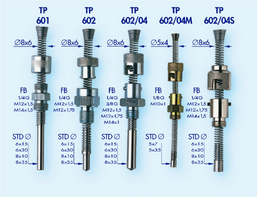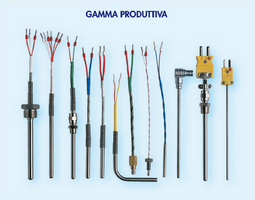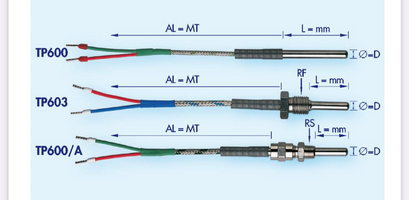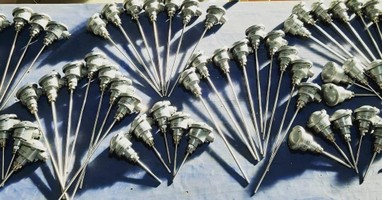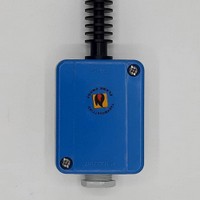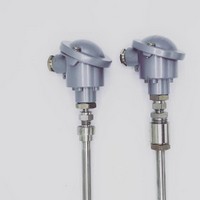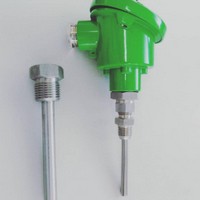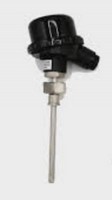TERMORESISTENZE
Sistemi di misura delle termoresistenze
Il collegamento a 2 fili è poco utilizzato in quanto introduce errori grossolani di misura, se la resistenza dei fili di collegamento non è trascurabile rispetto quella del termoelemento.
Difatti se si considera un termoelemento RTD (Pt 100) collegato con fili di rame da 0,5 mm2 distante 5 metri, la resistenza complessiva del collegamento andata e ritorno sarà circa sui 400 mq, che equivale ad un errore strumentale maggiore di 1°c. (Tabella 9.87) il che è superiore alle classi di tolleranza previste (Tabella 9.84) e pertanto vanno seguite le seguenti configurazioni misura (Figura 9.116):
A 2 fili: sconsigliabile, perchè può provocare errori superiori ad 1°c. anche per collegamenti brevi, in quanto le resistenze di linea di andata RL1 e di ritorno RL2 si sommano alla RTD (Pt100)
A 3 fili: sconsigliabile, perchè la configurazione a 3 fili compensa la resistenza dei fili di collegamento, in quanto RL1 ed RL2 essendo su due lati contigui del ponte non provocano variazioni di V. Difatti RL1 si somma alla resistenza fissa del ponte RF ed RL2 si somma a quella variabile RTD;
A 4 fili: consigliabile per la maggior precisione in quanto è la cosiddetta misura Volt_Amperometrica che viene effettuata con una corrente l di 1 mA, che provoca una tensione di uscita V, sempre proporzionale alla RTD a prescindere dalla resistenza dei fili di collegamento.
Thermoresistance measurement systems
The two-wire connection is little used as it introduces gross measurement errors, if the resistance of the connection wires is not negligible compared to that of the thermoelement.
In fact, if we consider an RTD thermoelement (PT100) connected with copper wires of 0.5 mm² at a distance of 5m, the overall resistance of the round trip connection will be about 400 mΏ, which is equivalent to an instrumental error greater than 1 ° C which is higher than the tolerance classes envisaged and therefore the following measurement configurations must be followed:
Two-wire: not recommended, because it can cause errors higher than 1 ° C even for short connections, as the line resistances RL1 and return RL2 are added to the RTD (Pt100);
Three-wire: recommended, because the three-wire configuration compensates for the resistance of the connection wires, as RL1 and RL2 being on two contiguous sides of the bridge do not cause variations in V. In fact, RL1 is added to the fixed resistance of the RF bridge and RL2 adds to that RTD variable;
Four-wire:Recommended for greater precision as it is the so-called Volt_Amperometric measurement, which is always carried out with a current I of 1 mA, which causes an output voltage V always proportional to the RTD regardless of the resistance of the connection wires.








